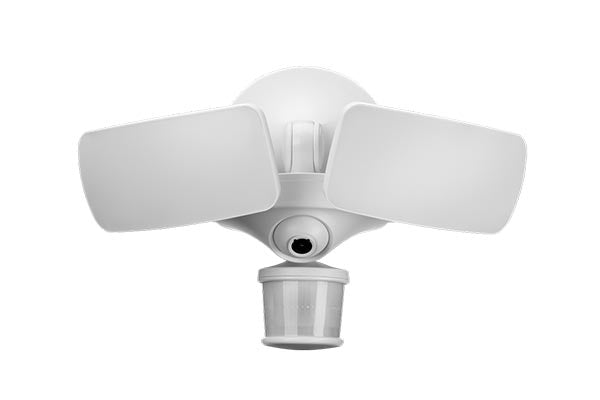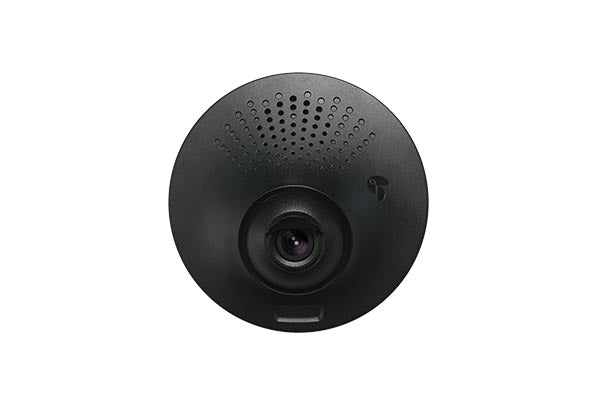
How to Plan a Home Security Fence
A great addition to your smart home is a security fence. Fences serve the vital purpose of restricting access in and out of your property making home security easier. This makes keeping the kids and pets in and intruders out a lot easier. Fences also create a private area for your family to gather and play giving the feel of your home extending outdoors.
Benefits of Home Security Fences
- Add to your home’s aesthetic appeal, your fence can carry over your home motif to the outdoors
- Mark out your property’s borders
- Keep children and pets within your border
- Deter unwanted intruders from entering – animals and human alike
- Add another strong layer of security
There are three main categories of fences.
Demarcation, or boundary fences let someone know that the area is private property. They do little to hinder access to an intruder. These include fence types such as split rail fences seen on farms and rural areas
Dissuasion, or obstacle fences exist to restrict access. Fences in this category are mainly for commercial applications. A fence of this type clearly states that the area is off limits. Steel fences, sometimes used temporarily in a construction site, are the norm for dissuasion fences.
Delay or security fences have the goal of delaying an intruder from gaining access. Most residential fences are this type. While no one defense can completely restrict entry to a motivated intruder, a security fence makes it more difficult. Security fences used in residential areas also have the added feature of being solid panels for privacy. A Kuna outdoor security light at the fence entrance adds even more safety around the perimeter.
When planning a fence for your property you will need to factor in a number of considerations, use, cost, zoning laws, neighbors, materials and weather for starters. Before you can start to plan your fence type you will need to recognize exactly what you expect out of your new fence. What is the purpose it will serve? Will is be simple a utilitarian fence to keep the family dog in? Do you want the privacy of a solid panel fence? Will it be decorative, reflecting and complementing the style of the house
Cost for a new fence can vary greatly depending on the materials you choose and whether you are planning it as a DIY project or will be hiring a professional. Additionally, the size of your property will have possibly the biggest impact.
Questions to ask yourself when building your fence:
- Will your whole property be bounded by the fence?
- Which portions do I fence in?
- Just the backyard or even only a portion of the backyard such as around a swimming pool?
- What budget do I allot?
- Setting your budget for the project will go a long way towards narrowing down the choice of materials.
Every municipality has their own set of rules and zoning laws that apply to property fences. Always check with your local building inspectors office to get a copy. If you don’t follow their rules, they could force you to tear down your fence and/or pay a hefty fine. Fence heights and distance from property lines (including sidewalks and roads) are regulated in most areas. As some fences are considered permanent structures you may even need to provide a copy of the building plan and get a permit for it’s construction. If you live in a planned neighborhood, don’t forget to contact the neighborhood association to see if there are limitations on new fences. Sit down with your neighbors to discuss your plans. Don’t surprise them with a finished fence, their cooperation may be the difference between your plans getting approved or not. Some neighbors may even be open to sharing the cost of a fence on shared boundaries or arrange a better deal with a contractor to do both properties at once
Chain-link fencing is undoubtedly the least expensive option for a fence, even with privacy slats installed, however many people do not find them visually appealing and may not give you a good return on investment if you sell your home. Wood fences are the most traditional and pleasing to the eye, but they can have a higher cost and require significant upkeep. More expensive redwood fences are able to survive contact with the ground without rotting, but other woods will need to be treated yearly. Aluminum and steel metal fencing can be quite attractive and reasonably priced. These fences have an elegant look of wrought iron without the cost and upkeep needed, but rarely offer any privacy treatments. The newest option on the market is composite and vinyl fencing. This material is virtually indistinguishable from painted wood to the eye, requires almost no ongoing maintenance and can be cut and fitted just like wood.
Map out your whole property and take detailed measurements. Note any obstructions that will have to be worked around such as out buildings and trees. Check the slope of your property to determine if you will need to do a step-down at any point to maintain the vertical appearance of the slats without any excessive gaps underneath. If you are building the fence on your own, check with a local contractor or zoning office on how deep the footings need to be. The freeze point will be deeper depending on your location and the concrete will need to be positioned below that point to keep your fence from rising out of the ground.
The height of your fence will largely be determined by local zoning laws. Typically you are limited to a six foot height. There may be opportunities to extend the height of the fence using sections that are more open. Privacy fences are often seen topped off with lattice work that can add two feet to the height while staying within the six foot privacy fence restriction.
While a six foot fence may not do much to discourage a dedicated intruder, it may make the difference between an opportunity seeker choosing your house or not. The extra time and visibility of climbing over a fence will send many to look for an easier target. Having privacy panels in your fence will also keep a burglar from knowing exactly what is on the other side. Choose a solid internal locking mechanism to keep outsiders from easily walking through your gates and post dog warning signs whether you have a dog or not.
A well planned fence can offer a significant return on investment for your home, increasing it’s value. The use you will get from it, including the increased sense of safety and security for your family, will make it worth your time and effort.
A smart home security light
Kuna is a smart camera in an outdoor light that
lets you prevent break-ins instead of waiting for an alarm
You're always connected
We recommend you install Kuna at all major entry points to your home so you’re never caught off guard when someone comes to your door. You can add multiple cameras to the Kuna app and your recordings will show footage from each of these camera.
Stop break-ins before they happen.

Save $20 on your first order.
Latest news, feature updates, and exclusive discounts.






